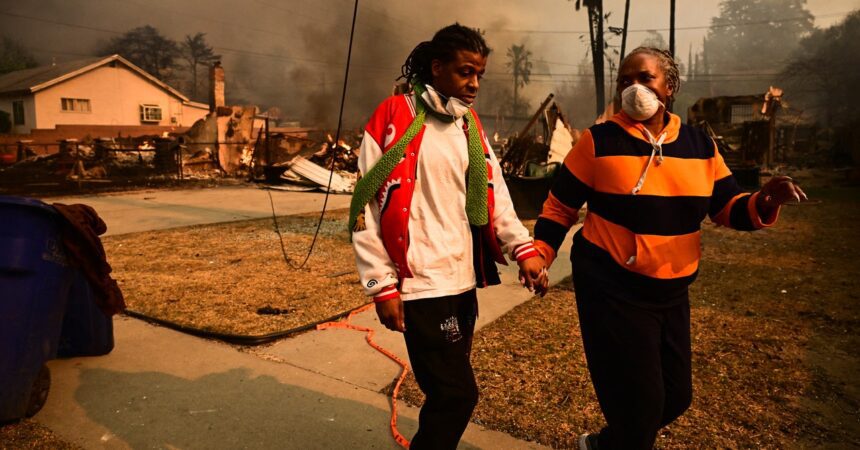The Impact of Wildfire Smoke on Health: Understanding the Risks and Protective Measures
As wildfires continue to scorch vast areas, particularly in regions like Los Angeles, citizens are grappling with the immediate dangers of evacuations, property loss, and a public health crisis fueled by hazardous air quality. With the ongoing conflagrations, residents are increasingly exposed to the harmful effects of wildfire smoke, demanding a deeper understanding of its implications on health and essential protective measures.
What is Wildfire Smoke?
Wildfire smoke comprises a complex mixture of gases and fine particulate matter. Its most dangerous component, known as PM2.5 (particles less than 2.5 micrometers across), can deeply penetrate the lungs and even enter the bloodstream. This type of particulate matter poses significant health risks, and during the recent spate of wildfires in California, levels of PM2.5 around Los Angeles have soared to “hazardous” classifications on the U.S. Air Quality Index.
The Health Risks of PM2.5 Exposure
According to health experts, the health ramifications of inhaling fine particulate matter can vary widely. Symptoms include:
- Mild irritation: burning or itchy eyes, runny nose, scratchy throat, and headaches.
- Respiratory distress: difficulty breathing, wheezing, coughing, fatigue, and chest pain.
- In severe cases, exposure to high levels of PM2.5 can exacerbate existing health conditions, increase the risk of heart attacks and strokes, and even lead to premature death.
Certain populations are particularly vulnerable, including:
- Children
- Older adults
- Pregnant individuals
- Those with preexisting heart or lung conditions
- Individuals with weakened immune systems
However, it’s crucial to understand that anyone can experience adverse effects from wildfire smoke, regardless of overall health status.
The Chemical Composition of Smoke Matters
The health risks associated with smoke are not solely based on particulate matter but also the chemical components released during wildfires. In California, as fires engulf homes and businesses, the smoke can contain chemicals emitted from synthetic building materials. These compounds may be more toxic than those originating from burning natural vegetation, posing an additional layer of danger to affected individuals.
Monitoring Air Quality
During wildfire events, air quality can change rapidly, making it essential for individuals to stay informed. Resources such as AirNow provide real-time data on air quality. Regular monitoring leads to better awareness of when to limit outdoor activity, especially during periods of high pollution.
Additionally, the Watch Duty app serves as an effective tool for tracking nearby wildfires, enabling users to stay updated on any potential threats.
How to Protect Yourself and Others
In light of the health risks associated with wildfire smoke, it’s critical to employ strategies to minimize exposure:
-
Stay Indoors: Limit outdoor activities during wildfire events, especially on days with unhealthy air quality.
-
Air Filtration: Use air purifiers that can filter out fine particulate matter, keeping indoor air cleaner.
-
Creating Safe Spaces: Seal windows and doors to keep outdoor air out. If possible, create a “clean room” in your home where the air is filtered and protected from smoke.
-
Masks: If you must go outside, consider wearing masks specifically designed to filter out fine particulate matter (N95 or P100 masks), which can provide some level of protection.
-
Stay Informed: Keep abreast of the latest air quality updates and health recommendations from local authorities.
- Know When to Seek Help: Be alert to severe symptoms such as persistent difficulty breathing, chest pain, or wheezing. If you or someone you know is experiencing these symptoms, seek medical attention immediately.
Conclusion
Wildfires are not just a natural disaster but a public health crisis. The recent fires have shown just how quickly air quality can deteriorate and how widespread the effects can be. Understanding the composition of wildfire smoke and its potential health risks is vital for preparedness and protection. By staying informed and taking protective measures, individuals can better safeguard their health during these challenging events. Remember, when it comes to smoke exposure, being proactive is your best defense.










